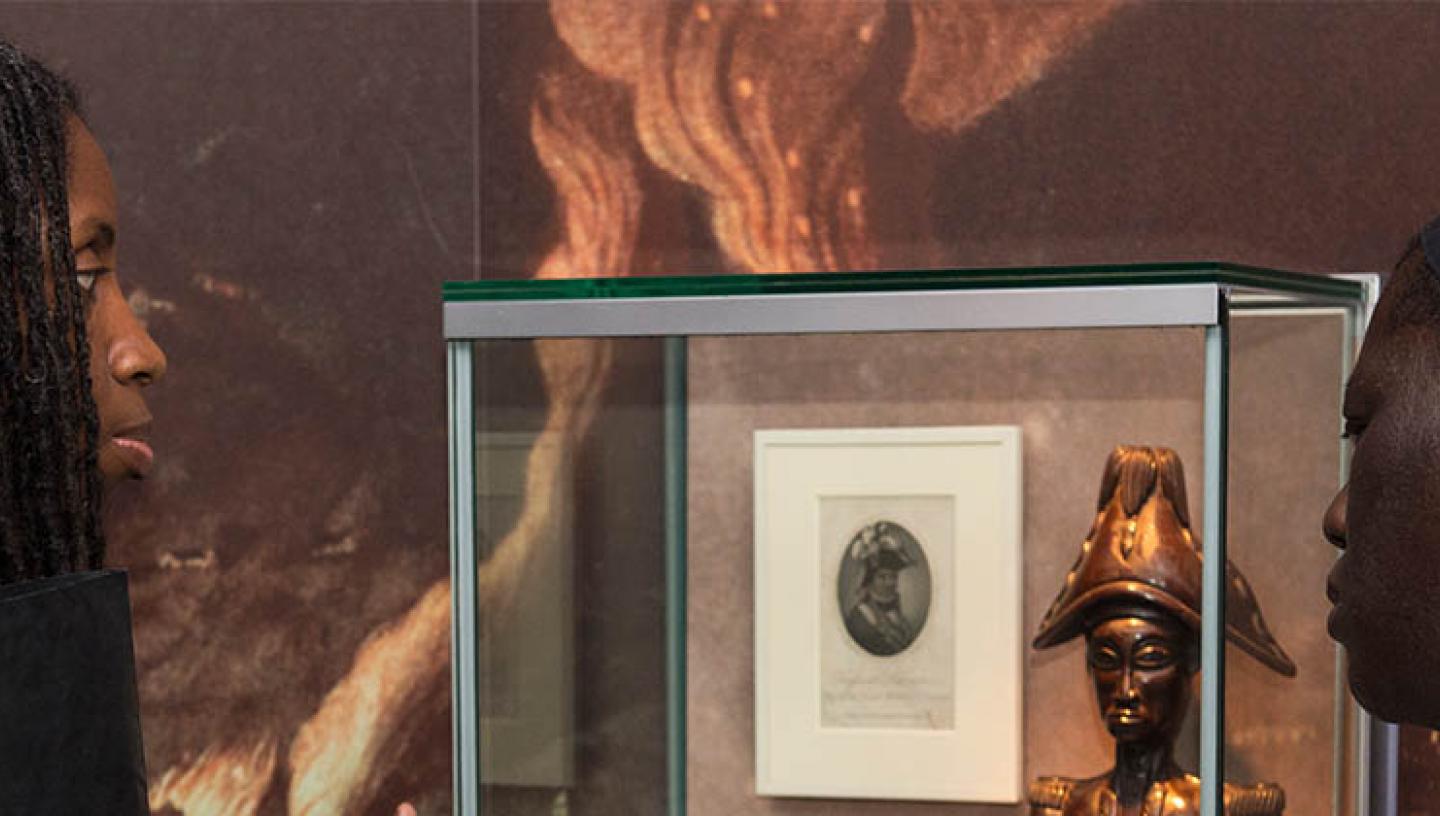
Reflecting on the new blockbuster Black Panther, Sacha Coward explores the film’s relevance to the National Maritime Museum, a museum whose collections and themes are closely tied to the British Empire.
"How do you think your ancestors got these? Do you think they paid a fair price? Or did they take it, like they took everything else?"
- Erik Killmonger, Black Panther
By Sacha Coward, Community Participation Producer
Black Panther, based on the Marvel comic series of the same name, has been heralded as a genre-breaking revelation of the superhero trope. Set in the fictional African nation of Wakanda, a country that has avoided the ravages of the transatlantic slave trade and European intervention due to advanced technology. The film itself poses many questions about African culture, race, colonialism and even the role and function of museums.

The beginning of a procession from the National Maritime Museum as part of International Slavery Remembrance Day 2016. In the lead up to the 23rd of August every year we work with local African and Caribbean communities to reflect, explore and reconnect with the museum’s collections around the transatlantic slave trade.
Who owns history?
One of the most powerful scenes in the film for me as a museum worker takes place in a fictionalised ‘Museum of Great Britain’. In this museum, a main character has an altercation with a smartly dressed curator around an African carving, after debating where the object comes he then begins a monologue about the way objects in British museums were taken from Africa through force and deception. This ends with a dramatic heist where the character takes an African mask, either stealing it or reclaiming it depending on your perspective.
When museums talk about who owns an object or where an object comes from, the word we use is ‘provenance’. Provenance is all the information that comes with an object. Information like; who made it? Where it was found or bought? Who acquired it and in what context? All newly acquired objects that are brought into museum collections must have provenance so that in years to come it can be shown how a museum got hold of any given object and to ensure that all acquisitions are ethical and legitimate. But what about objects that have been acquired a long time ago?

This is an illustration of an African woman by an admiral associated with the slave trade. We know nothing of her identity, background or backstory.
Like many British museums, the National Maritime Museum has a collection of objects from across the world which came into British ownership hundreds of years ago. At this time, provenance and record-keeping was often much less thorough. In particular, ethnographic objects (non-European artefacts) that were taken during the hay-day of the British Empire often do not specify the name of the maker, the exact context of how the object was found or even what the object was used for or made for. At the time, such information was not deemed important. This creates a complex ethical problem; the museum is now the designated caretaker of the object, but many would argue that many objects in museums should not have been given to them in the first place.
As with many museums, our approach is to try and engage the living communities connected with our artefacts through trips to our stores, consultation and open conversation. Often we can learn a huge amount about the provenance of objects by talking to living people who share ancestry with the makers and owners of the objects. This is more and more becoming the standard in museums. In fact, one large part of my job is about working with communities to better understand our collections and where possible increase access to them.

Nkechi is part of an African and Caribbean heritage group. As part of our Fun Palace takeover last year we asked whether she could create a tour of our Atlantic Worlds gallery exploring and reinterpreting the significance of the black abolition movement, for example this sculpture of Jean Jacques-Dessalines.
Coming back to the explosive museum scene in Black Panther… whilst full-on heists are rare, museums more and more are engaging with active repatriation projects for objects. This means they look to find ways that certain objects can be ethically placed back into their community of origin. It is often very hard to prove who might have a rightful claim of ownership to an object (when there are no detailed records and the original maker, owner, or origin community is no longer alive) but when provenance has been ascertained the idea is that objects can be returned to their community or culture of origin. Examples include museums in New Zealand repatriating Maori artefacts and work around the world in returning human remains to indigenous communities for burial and ceremony.
Therefore Black Panther poses a question that has long been running in the museum sector: who has a right to keep and preserve history? For now, as the designated custodians for collections the role of an institution like Royal Museums Greenwich is two-fold: to look after the objects entrusted to us, and actively engage communities in their display, upkeep and interpretation. This means finding opportunities to research and explore our collections and being as open and transparent about what we have as possible. Outcomes from this work will be seen in the new galleries opening in September this year. For example, considerable work with objects associated with Captain Cook and Missionary voyages. Through working with local Pacific communities of Maori, Cook Island, Fijian, Tongan and Samoan people we have been looking to both give access to these artefacts in the Museum and to better understand their stories.